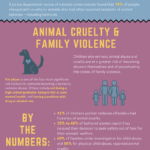Witnessing pet abuse is an egregious violation of ethical principles that govern our interactions with animals. It elicits a visceral reaction, compelling the observer to grapple with profound moral quandaries. This immediate emotional response often prompts questions of accountability, intervention, and the implications of inaction. What should one do upon encountering such a harrowing scene?
First and foremost, it is important to clarify the nature of abuse. Animal abuse encompasses a broad spectrum of behaviors, including physical maltreatment, neglect, psychological torment, and inadequate care. Recognizing these harmful actions is fundamental to formulating a suitable response. In some cases, it might be blatant, such as striking or kicking a pet. Other instances may be less visible yet equally detrimental, such as withholding food, water, or medical treatment.
Upon witnessing an instance of pet abuse, the instinctive reaction may be to intervene directly. However, direct confrontation can exacerbate the situation, potentially endangering both the observer and the animal. Instead, one should take a measured approach, maintaining a safe distance while assessing the situation. This allows one to gauge the severity of the abuse without escalating tensions between the perpetrator and the observer, which could lead to further harm.
Simultaneously, it is crucial to document the incident. This can entail taking photographs, recording video footage, or writing down detailed descriptions of what transpired, including time, location, and the identities of those involved, if possible. Such evidence is invaluable when reporting the incident to authorities, as it provides a concrete foundation for investigation. Documentation serves not only as a testament to the abuse but also as a mechanism for accountability.
The next step involves understanding the appropriate channels for reporting abuse. In many jurisdictions, animal control agencies are responsible for investigating allegations of animal cruelty. Local law enforcement may also be involved, depending on the circumstances. It is critical to familiarize oneself with the laws regarding animal welfare in your area, as these can vary significantly. Some regions have stringent laws to protect animals, while others may lack sufficient protections, rendering the process of seeking justice more complex.
When reporting, conveying essential details clearly and concisely enhances the likelihood of efficient intervention. Providing your documented evidence can substantiate your claims, compelling authorities to take action. Awareness of community resources, such as shelters or humane societies, can also bolster your efforts. Many of these organizations possess networks that facilitate the rescue of abused animals, providing a lifeline in desperate times.
Moreover, it is also valuable to engage the community. Raising awareness through social platforms, community meetings, or local advocacy groups cultivates a culture of vigilance against animal cruelty. Educational initiatives can foster a more informed populace, capable of identifying and addressing mistreatment of animals. Such engagement can manifest in numerous ways, from hosting awareness campaigns to distributing informative literature about animal welfare.
One pivotal question that arises is: why do individuals commit acts of cruelty against animals? Understanding the psychological underpinnings of such behavior can inform both prevention and intervention strategies. In many cases, perpetrators may have experienced violence in their own lives or lack empathy because of their upbringing. Others may act out of frustration or ignorance regarding the needs of the animal. Empathizing with these complexities should not lead to absolution but rather a call to educate and reform through outreach and resources aimed at promoting responsible pet ownership.
A critical aspect of this conversation focuses on the concept of bystander intervention. Many individuals may hesitate when faced with a moral dilemma, often questioning the appropriateness of their response or fearing repercussions for involving themselves. Cultivating a mindset that emphasizes responsibility toward vulnerable beings can galvanize actions that prioritize animal welfare. Encouraging empathy for animals and advocating for their rights can empower bystanders to act decisively and courageously when faced with such scenarios.
It is also essential to recognize the importance of aftercare. Once a situation of abuse is reported and authorities take action, the road to recovery for the affected animal can be arduous. Rehabilitation may be necessary to undo the trauma inflicted upon the animal, whether through medical treatment, behavioral therapy, or simply a nurturing environment. Supporting local shelters or volunteering with rehabilitation programs for abused animals can help make a tangible difference in the lives of these creatures.
Your vigilance doesn’t just matter at that moment of potential intervention; it extends into systemic change and community building. Become an advocate, disseminate knowledge about animal welfare, and cultivate compassion in your social circles. Every act of kindness, every piece of awareness created, contributes to a collective movement that stands firmly against cruelty.
To conclude, witnessing animal abuse is a critical moment that tests our ethical fiber. By taking measured action, fostering awareness, engaging with local resources, and addressing the deeper societal issues surrounding pet ownership, individuals can make a palpable difference. Rather than succumbing to despair, channel that indignation into meaningful mobilization against cruelty, turning a moment of heartache into a catalyst for change. The responsibility lies with us all to protect our most vulnerable companions—our pets. Together, through awareness, education, and courage, we can cultivate a world where animal abuse is no longer tolerated, but instead, met with collective action and compassion.










